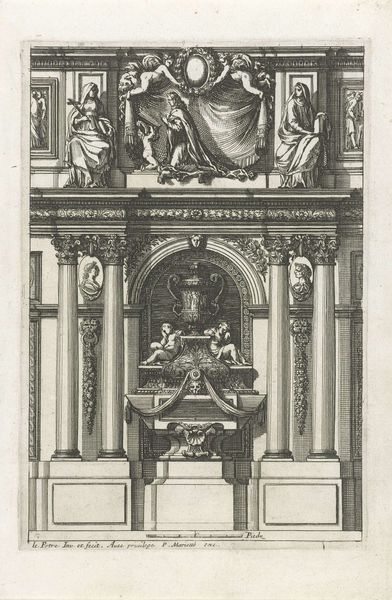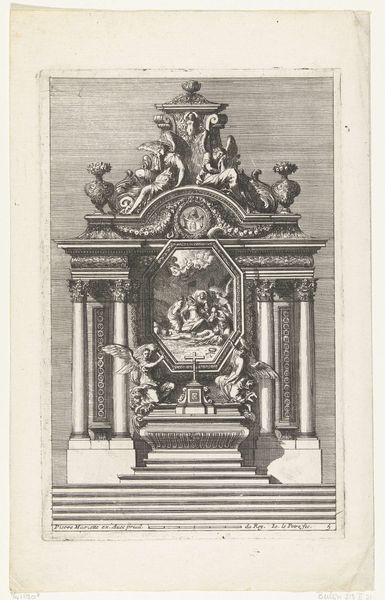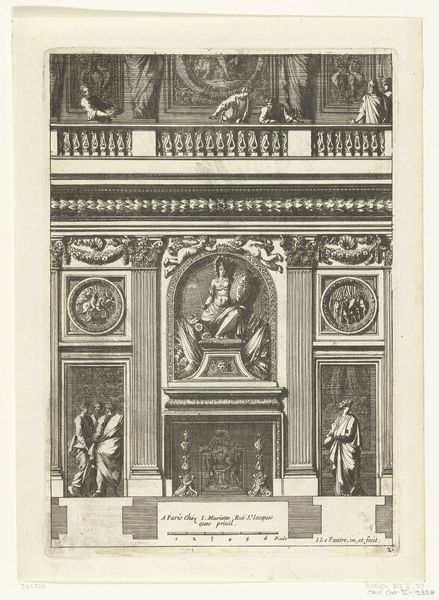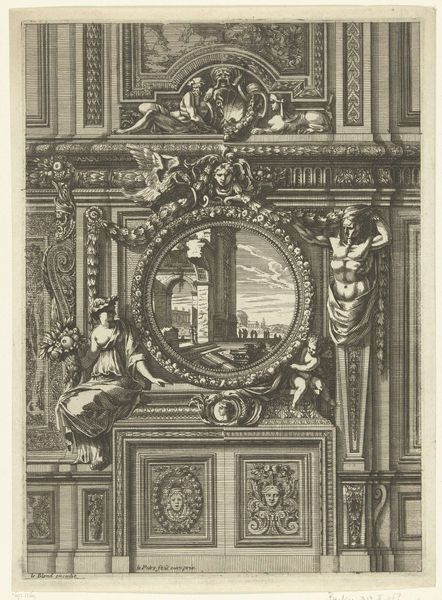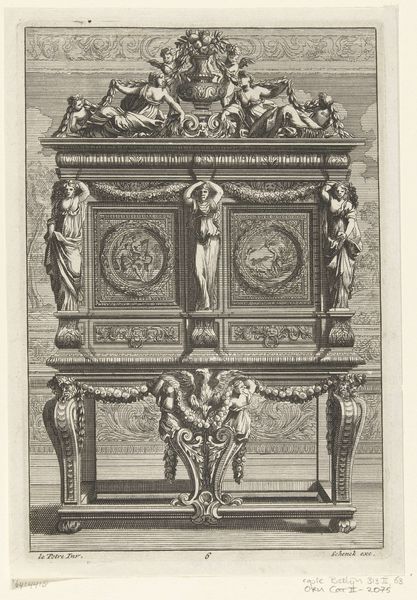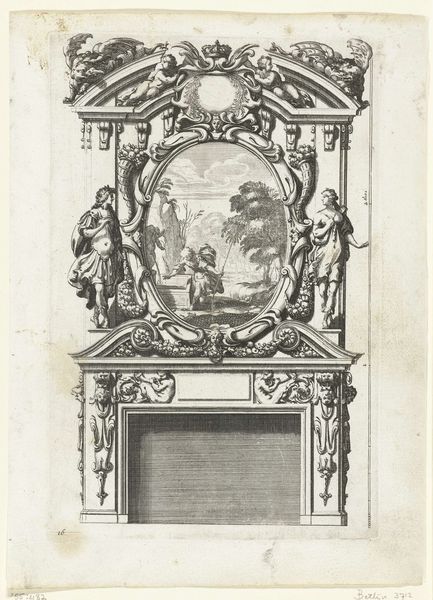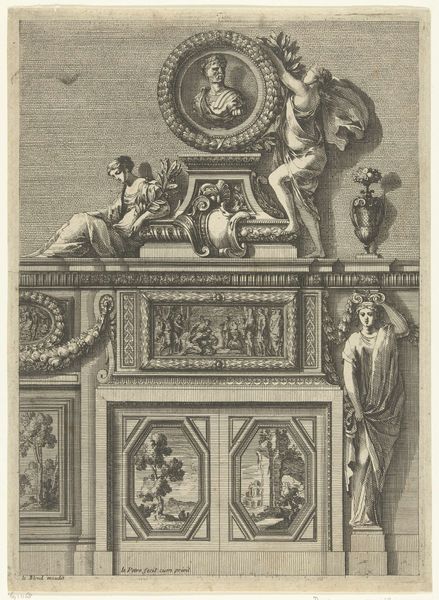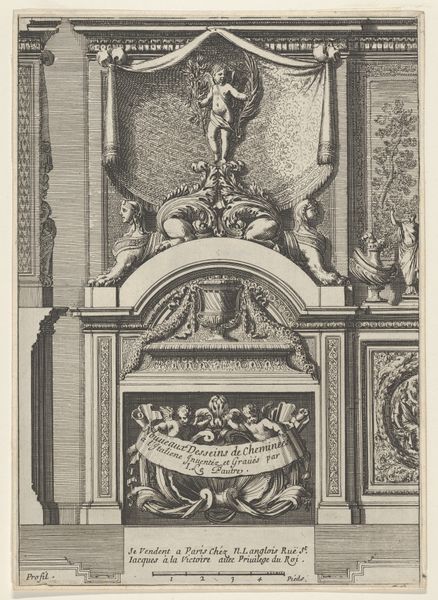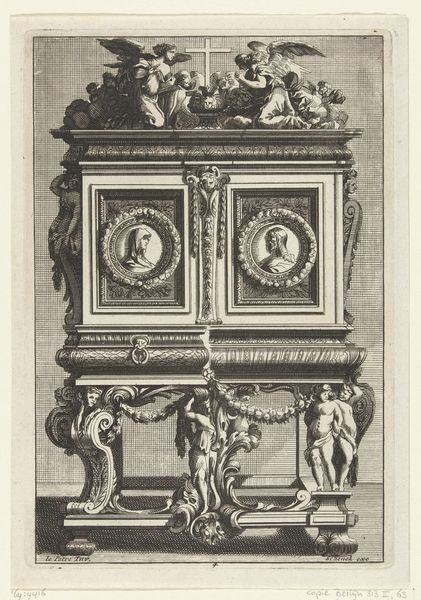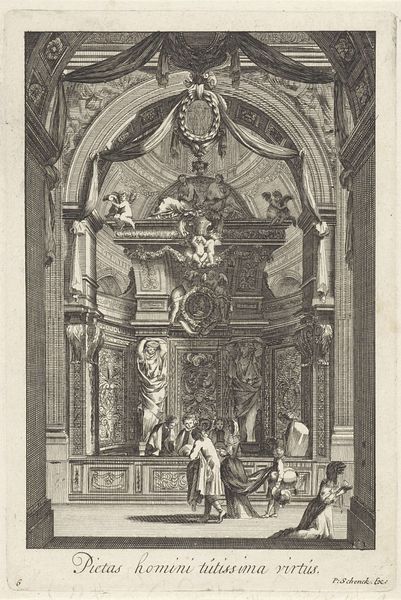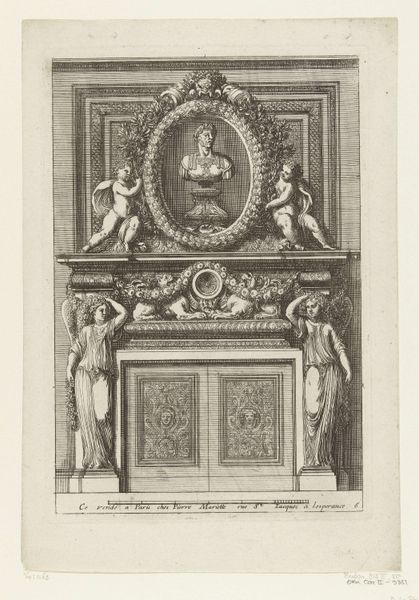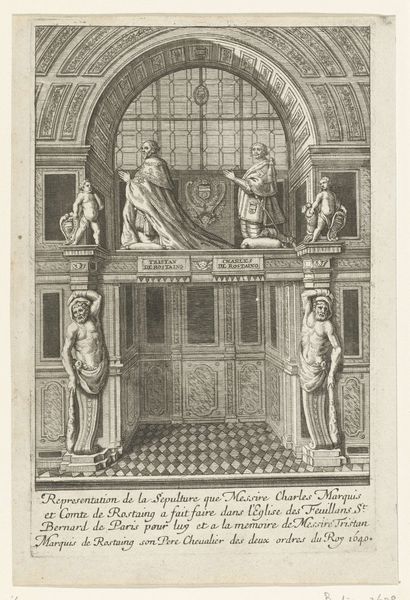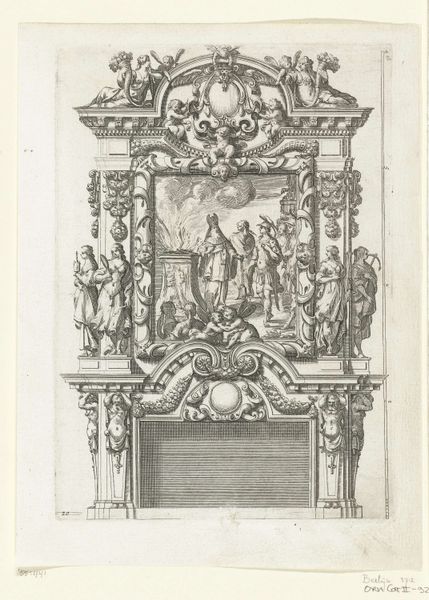
drawing, print, etching, engraving
#
drawing
#
baroque
# print
#
etching
#
form
#
line
#
history-painting
#
engraving
Dimensions: height 234 mm, width 164 mm
Copyright: Rijks Museum: Open Domain
Curator: Looking at this, I immediately imagine myself shrinking down and exploring the tiny world inside that fireplace. It feels like a stage set, all the elements perfectly placed. Editor: Indeed! What we are looking at is an etching and engraving by Jean Lepautre titled "Onderboezem met ovaal schilderij," created circa 1665-1670. Currently, this remarkable work resides within the esteemed collection of the Rijksmuseum. Lepautre was deeply influential in disseminating Louis XIV style across Europe. This print is a superb example of Baroque ornamental design. Curator: Baroque for sure! It's maximalism on overdrive! What strikes me is the way everything is so intentionally composed. The figures, the ornamentation—it's like a little play frozen in time. Even the clouds in the oval painting above seem carefully arranged. I’m kind of obsessed with this hidden face on top of the mantelpiece! Editor: Precisely. These elements all underscore a critical theme present in much art of this period—the interplay between reality and illusion. It is no accident that the painting seems to “float” over the interior. Furthermore, in the Baroque period, architectural interiors were employed not only as spatial design but also to articulate ideological values of class and power, reinforcing status. Curator: Status, definitely. The sheer ornateness implies a certain decadence. But also, consider this almost hyper-realistic scene… isn’t that odd when you put that detail within something that's essentially mass-produced? How does this change the perception of who it's designed to appeal to? Editor: An excellent question, actually, about the target audience for such a design. And it brings us to a very important point—access. The affordability of prints was key in the history of design. By virtue of its reproduction as a drawing/etching/engraving, this very type of image facilitated the transmission of fashionable trends beyond aristocratic circles. Curator: Huh, the democratization of interior design…well, that’s an interesting thought to ponder! Thanks for bringing your scholarly perspective to the stage! I see more to Lepautre now! Editor: Likewise! Thinking about these complex negotiations between luxury, utility, design, and power through a fresh lens—a worthy and thought-provoking experience.
Comments
No comments
Be the first to comment and join the conversation on the ultimate creative platform.
